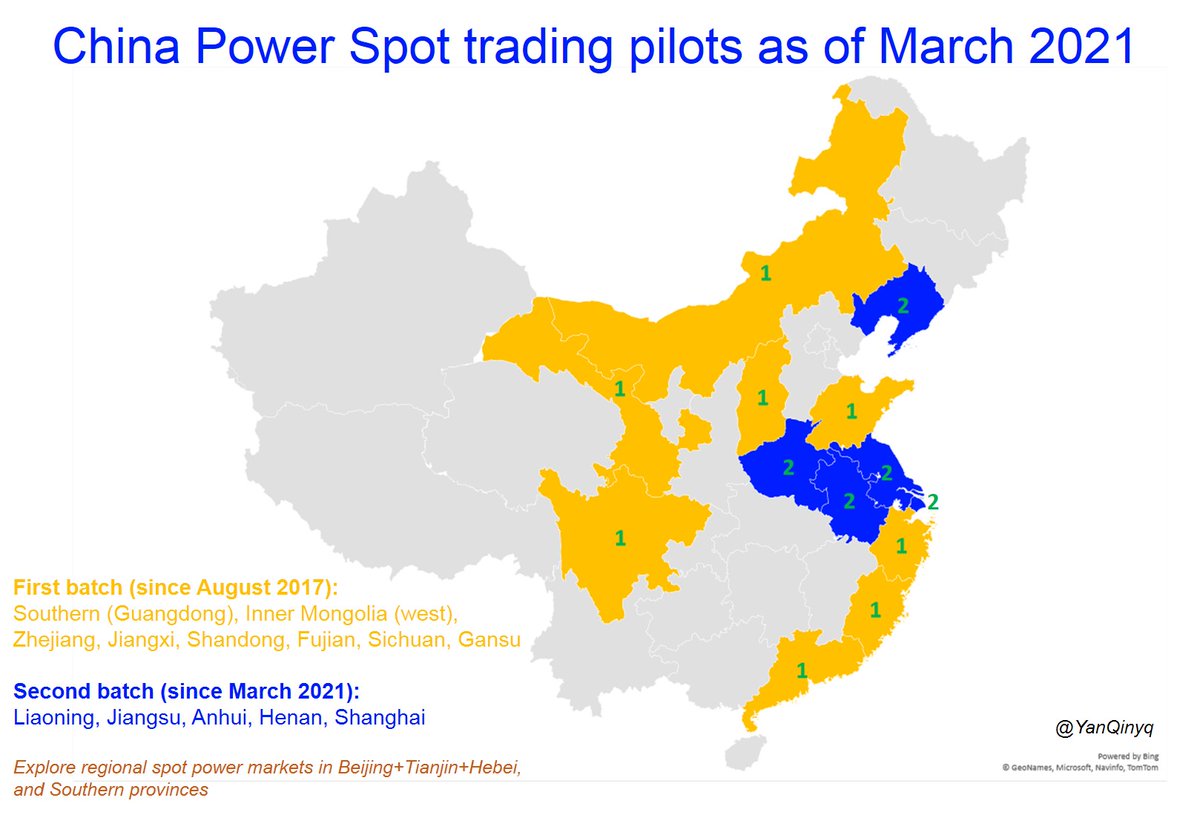
📰What caused China's Coal shortage?
An in-depth analysis by Caijing (financial news) with exclusive interviews of coal miners/traders/power plants in the journalists' month-long field visits to Shanxi and Inner Mongolia.
Link: bit.ly/3l1ZQbN
An in-depth analysis by Caijing (financial news) with exclusive interviews of coal miners/traders/power plants in the journalists' month-long field visits to Shanxi and Inner Mongolia.
Link: bit.ly/3l1ZQbN

These firsthand interviews of stakeholders provide new insights into China's energy crunch.
Some mentioned the 'cutting coal mines' capacity since 2016' as a major reason causing coal shortage.
Caijing journalist found out this is not the case.
Some mentioned the 'cutting coal mines' capacity since 2016' as a major reason causing coal shortage.
Caijing journalist found out this is not the case.

Caijing interviewed a Shanxi coal producer:
'Cutting capacity has led to closure of aging and inefficient coal mines, effective coal production capacity has increased, such as closing down 1Mt/yr small ones, build 5 Mt/yr new ones, improving resource supply'
'Cutting capacity has led to closure of aging and inefficient coal mines, effective coal production capacity has increased, such as closing down 1Mt/yr small ones, build 5 Mt/yr new ones, improving resource supply'
So what led to the Coal/Power shortage?
Very frank and sharp comments by Caijing:
'Coal production lagged demand growth, then coal plants too optimistic about govern. intervention in coal prices, missed opportunity to restock inventory earlier'
Very frank and sharp comments by Caijing:
'Coal production lagged demand growth, then coal plants too optimistic about govern. intervention in coal prices, missed opportunity to restock inventory earlier'
Why have coal plants been optimistic?
'Since April, NDRC has been emphasizing coal supply security, but the state planner's tone turned optimistic in June-August, announcing on 27 June that coal market balanced and coal price will fall in July'
'Since April, NDRC has been emphasizing coal supply security, but the state planner's tone turned optimistic in June-August, announcing on 27 June that coal market balanced and coal price will fall in July'
I have been following the coal market and NDRC notices and agree with the observation in Caijing story.
'China coal prices surged since July and spiked in September, this has caught short many power plants who postponed restocking until coal price declines'
'China coal prices surged since July and spiked in September, this has caught short many power plants who postponed restocking until coal price declines'

What caused the 🇨🇳Coal shortage?
'Not lack of coal resource & production capacity, but various regulatory and accidental factors'
'This is also highlighted by lack of coordination among ministries/departments...... leading to conservative decision-making'
'Not lack of coal resource & production capacity, but various regulatory and accidental factors'
'This is also highlighted by lack of coordination among ministries/departments...... leading to conservative decision-making'
Lack of coordination:
'one at a major coal producer expressed worries when NDRC urged coal mines to ramp up output in late Sep, because ministries of Environ. , Natural resources , Coal Mine Safety all have rules on envi. assessment, land, safety etc'
'one at a major coal producer expressed worries when NDRC urged coal mines to ramp up output in late Sep, because ministries of Environ. , Natural resources , Coal Mine Safety all have rules on envi. assessment, land, safety etc'
Following NDRC's intervention measures and raising coal output, China's coal production rose quickly led by the major producing provinces, Shanxi ,Inner Mongolia and Shaanxi.
BUT, market observers interviewed by Caijing expect 30Mt supply gap in December.
BUT, market observers interviewed by Caijing expect 30Mt supply gap in December.

As northern China enters winter heating season, coal demand will rise too, so I think it is early to say the Coal shortage has fully eased.
and it is not that easy for coal mines to raise output given restrictions on production safety, environ. etc.
and it is not that easy for coal mines to raise output given restrictions on production safety, environ. etc.
Finally, as Europe is also experiencing high power and gas prices at the moment:
'Tackling climate change and Energy transition requires systemic thinking, which shall not ignore industrial logic and market forces (dynamics)'
'Tackling climate change and Energy transition requires systemic thinking, which shall not ignore industrial logic and market forces (dynamics)'
• • •
Missing some Tweet in this thread? You can try to
force a refresh















